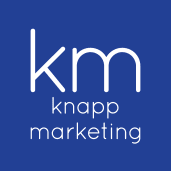The past decade has seen a dramatic shift to a buyer’s market in legal services, with in-house counsel demanding greater value for their legal spend. Coupled with a rise in alternative legal service providers, this increasingly competitive market makes it imperative for lawyers to stay top of mind at the times most critical to the decision-making process. But how?
Like all relationships, business relationships are built on trust and value. That means lawyers should continually identify opportunities to build trust and add value through daily interactions.
Here are seven tried-and-true tactics along with real-world applications that help lawyers differentiate themselves by taking a holistic, value-driven approach to building relationships.
1. Ask for Feedback
Give your clients the opportunity to have an open and honest conversation about their experience working with the firm and lawyers, and to discuss what adds value to the relationship. What each client considers “value” can be dramatically different.
“At Poyner Spruill, we have had great success with client service interviews. Collecting feedback is a straightforward way to find out how individual clients feel about the experience they are having with your firm,” says Brandi Hobbs, Client Service & Strategy Director. “In the absence of direct client feedback, identify groups of people primarily responsible for each step of the client journey — intake, billing and so on — and discuss with them the issues that arise in the normal course of business. Chances are, if your clients are frustrated, these conversations will help identify sources of friction and ways to relieve it.”
2. Go Beyond Legal
Demonstrate your ability to discuss market impact beyond the legal implications. Offer your expert opinion on how a significant development will affect the company’s business, operations, brand or reputation. Consider transforming this market knowledge into articles, blog posts, short videos, or custom resources.
“For opportunity spotting, you need to look outwards and inwards,” says Helena Lawrence, Senior Marketing & Business Development Manager of Cybersecurity & Data Privacy at Orrick. “An important question when spotting opportunities is what is in it for me? What is your strategic business objective and how to client opportunities and needs fit with your firm’s strategy? At Orrick, this is how we approached Europe’s onerous privacy regulation, the General Data Protection Regulation (GDPR), and why we decided to create our GDPR Readiness Assessment Tool.
“We wanted to globally raise our profile as the go-to data privacy law firm. We knew the new legal requirement was coming and our clients said they needed help to prepare for compliance. We wanted to make it easier for our clients to identify what their exact needs were. We also have many clients that are fast on growth with limited resources so we wanted to help them help themselves. We wanted to make the law accessible. So we had the opportunity to create a compliance resource for companies to do a self-check on their state of GDPR readiness and provide them customized actionable reports.”
3. Share Metrics That Matter
Know the metrics that matter most to your clients — and which ones they use to evaluate outside counsel. With greater pressure for cost and efficiency, in-house counsel are relying on metrics to make more informed decisions, evaluate consistency and have greater predictability. You can prepare a custom report based on their greatest areas of concern.
“Different client legal departments rely on different metrics to make their outside counsel selections, monitor budgets, and measure efficiencies and outcomes,” says Keith M. Maziarek, Director of Pricing and Legal Project Management at Katten Muchin Rosenman LLP. “Not surprisingly, most metrics are somehow tied to the budget. I’ve learned over time that understanding the client’s budget allocation process is one of the most effective ways of ensuring that service delivery decisions align with the client’s internal priorities. Further, establishing clarity on the assumptions that dictate the allocation of funds is even more insightful. When deviations occur, using the client’s own assumptions as a reference point for articulating the nature and drivers of the deviations usually leads to faster and more rational resolution.”
4. Nurture Your Network
Let your contacts know you are thinking of them. Send a congratulatory note if they’ve hit a milestone in their career, share an article related to a topic they are interested in, let them know you’ve used their name in a relevant conversation. You never know what communications can result from a quick email, brief note on LinkedIn, or phone call to let someone know you are thinking about them.
“Everyone is a client,” says Steven Bell, Director of Client Service at Womble Bond Dickinson LLP. “Some of them are currently active and paying fees. Others potentially could become active and start paying fees. If you want one of the potential clients to become a valued, active client, you need to treat her, right now, as though she currently is an active, important and paying client. Demonstrate that you care about her and her business. Stay in touch regularly, sometimes to catch up on a personal basis, and even more often to add value by sharing information about the industry, legal developments, competitors, ways she can impress other executives.
Of course, you can’t treat every potential client as a most-important client, so it’s critical to be very strategic about the ones you select to pursue. Even in the age of AI, the personal angle still rules.”
5. Be a Connector
Establish meaningful and long-lasting relationships by helping your contacts expand their networks. Offer introductions to your trusted contacts who can serve as a resource or mentor. Job changes are a great opportunity to offer an introduction, especially if the contact is transitioning into a new position or different industry.
“General counsel are 68 percent more likely to change jobs in January than any other month,” says Samantha McKenna, Head of Sales, Enterprise, New York, at LinkedIn. “Make sure you’re tracking when new GCs are coming in and out of your key accounts, and use this as an opportunity to reach out. Be especially aware of individuals who change jobs into promotions — they will have initiatives to accomplish quickly and will look to prove value in their new role as quickly as possible.”
6. Double Down on Your Clients
We are all familiar with the 80/20 principle, yet many lawyers are focused on new business generation from prospects. Double down on time dedicated to nurturing your client relationships as well as client relationships of the firm. Be sure you take time to remind clients that you are invested in their success for the long term.
“While many lawyers look to new prospects in the new year, it can also be a great time to redouble your efforts to connect with existing clients,” says Eric Gruis, Senior Client Service Manager at Eversheds-Sutherland. “Many of your contacts may have resolved to get a head start on CLE or take more networking lunches this year — find out what their business resolutions are and how you can help make them happen.”
7. Build From Within
Research your firm’s lawyers and the practice areas they handle. Consider what trending issues and upcoming regulations may impact your clients. It is not enough to be partners under the same roof; you want to be in a position to seamlessly recommend a solution internally. (Who has ever heard the words, “Oh, I didn’t realize we did that work here”?) Think about keeping a “cheat sheet” handy with talking points on trending areas and how your partners can assist clients. Include examples of recent successes and key clients to reference. Give your partners this information about your services as well. They are among the most likely sources of business for you.
“Two tactics that successfully promoted building from within at a prior firm were holding monthly attorney lunches and ensuring communication between the monthly practice group meetings,” says Elizabeth W. Tumminia, Chief Marketing Officer at Pashman Stein Walder Hayden PC. “We held monthly attorney lunches with an agenda that highlighted new matters, cross-selling and business generation. The managing partner would prepare for the meeting by talking to individual practice group leaders about interesting developments in their area. Then, he would pick three or four to share at the following monthly meeting. The attorneys would prepare a few slides that discussed what made the cases interesting, how the matter came in, and what we were doing to further the relationship. If appropriate or applicable, they would share who had the primary relationship, where they met, and how they closed the sales loop to bring in the matter.
“The other tactic was my consistent attendance at all monthly practice group meetings — big and small — to serve as the connector. I would listen for client names and matters. I would then introduce or let the responsible attorney know their client or matter was mentioned in another group or by the other attorney and make sure that they spoke.”
This article originally appeared in Attorney at Work.


